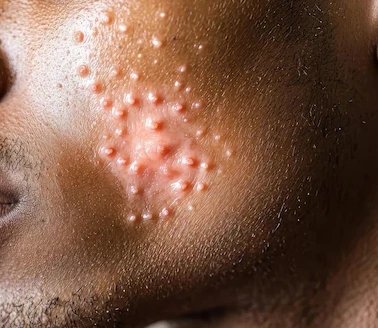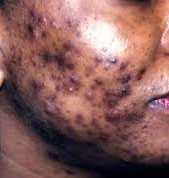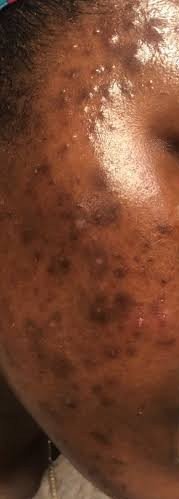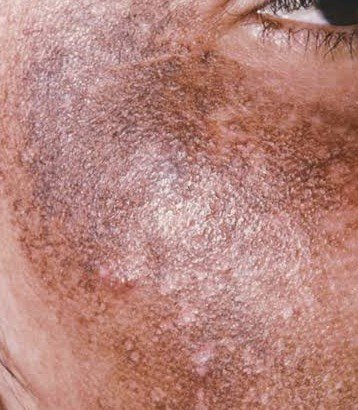


Acne and hyperpigmentation—two skin concerns that often go hand-in-hand—can feel like an endless struggle, leaving your complexion uneven and your confidence shaken. These unwelcome challenges can turn any skincare routine into a rollercoaster ride. But here’s the good news: there’s a way forward. This guide is your ultimate resource for understanding the causes of acne, addressing post-inflammatory marks, and finding the perfect acne and hyperpigmentation fix set for your unique skin needs. Let’s dive in and explore the science, treatments, and tips that will set you on the path to radiant, even-toned skin!
The Science Behind Acne: Understanding Your Skin
Acne isn’t just about visible breakouts; it’s a deeper issue involving your skin’s oil production, pore health, and bacterial activity. Your skin naturally produces sebum to stay hydrated, but excess oil combined with dirt and dead skin cells can clog pores, leading to acne.
A key player in this process is Cutibacterium acnes, a bacteria naturally present on the skin. When trapped in clogged pores, it triggers inflammation, resulting in pimples or cysts. Left untreated, this inflammation can cause scars or hyperpigmentation, particularly in darker skin tones.
Understanding acne’s root causes is the first step in breaking the cycle. With a balanced approach to skincare, you can restore harmony to your skin and reduce the chances of post-acne marks.
Next, let’s explore what happens after acne clears—hyperpigmentation.
Hyperpigmentation Types: Identifying Your Concern
Not all hyperpigmentation is the same, and understanding its type is crucial for effective treatment. Here’s a breakdown:
Post-Inflammatory Hyperpigmentation (PIH):

These dark spots are the skin’s response to inflammation, such as acne. The overproduction of melanin during healing causes discoloration.
Sunspots (Lentigines):

These are caused by prolonged sun exposure, often appearing as small, flat brown spots.
Melasma:

This form of hyperpigmentation is hormone-driven and worsened by sun exposure. It often appears as larger patches, making it more challenging to treat.
Each type responds differently to treatments. For example, PIH often fades with exfoliation and brightening agents, while melasma requires gentler, long-term strategies.
With the types of hyperpigmentation identified, let’s clear up common misconceptions about acne.
What Causes Acne: Myths vs. Facts
Acne is often misunderstood. Let’s debunk some myths:
Myth 1: Greasy food causes acne.
While a diet rich in fried foods isn’t great for overall health, it doesn’t directly cause acne. The main culprits are excess oil production, clogged pores, and bacteria.
Fact: Hormones are a major trigger.
Hormonal fluctuations during puberty, menstruation, or stress can increase sebum production, leading to breakouts.
Myth 2: Washing your face more often prevents acne.
Over-cleansing can strip your skin of its natural oils, prompting your sebaceous glands to produce even more oil. Gentle cleansing is key.
Addressing acne through proper treatments like retinoids and chemical exfoliants not only clears breakouts but also minimizes the risk of hyperpigmentation.
Now, let’s discuss effective products that tackle both acne and dark spots.
Best Serums for Acne-Prone Skin That Fade Hyperpigmentation
When it comes to serums, the right ingredients make all the difference. Look for:
Niacinamide: Reduces redness, regulates oil production, and fades dark spots over time.
Vitamin C: A powerful antioxidant that brightens skin tone and protects against environmental damage.
Potassium Aceloyl Diglycinate – a derivative of Azelaic Acid or Tranexamic Acid: Effective for stubborn scars and melasma, these ingredients inhibit melanin production and calm inflammation.
Finally, let’s address a common temptation—pimple popping.
The Dos and Don’ts of Pimple Popping
Popping a pimple might seem like the fastest fix, but it can lead to scarring and hyperpigmentation if done incorrectly. Here’s how to do it safely (if you must):
Dos:
– Use clean hands and sterilized tools.
– Wait until the pimple is white or yellow at the tip.
Don’ts:
– Never pop inflamed or red pimples—it’s a recipe for scarring.
– Avoid using nails or excessive pressure.
When in doubt, consult a dermatologist for professional extraction.
Let’s wrap up with a clear action plan to guide your skincare journey.
Conclusion:
Your Journey to Radiant Skin
Acne and hyperpigmentation may seem like daunting challenges, but with the right knowledge and tools, you can achieve the clear, glowing skin you deserve. Here’s your action plan:
1. Understand Your Skin: Identify the root causes of your acne and hyperpigmentation.
2. Choose the Right Products: Incorporate targeted treatments like niacinamide, vitamin C, and azelaic acid into your routine.
3. Practice Patience: Consistency is key—results take time but are worth the effort.
4. Avoid Harmful Habits: Resist the urge to pop pimples or over-cleanse your skin.
Ready to get started? Explore recommended products tailored for your needs HERE and build a skincare routine that works for you. Your radiant skin journey begins today!